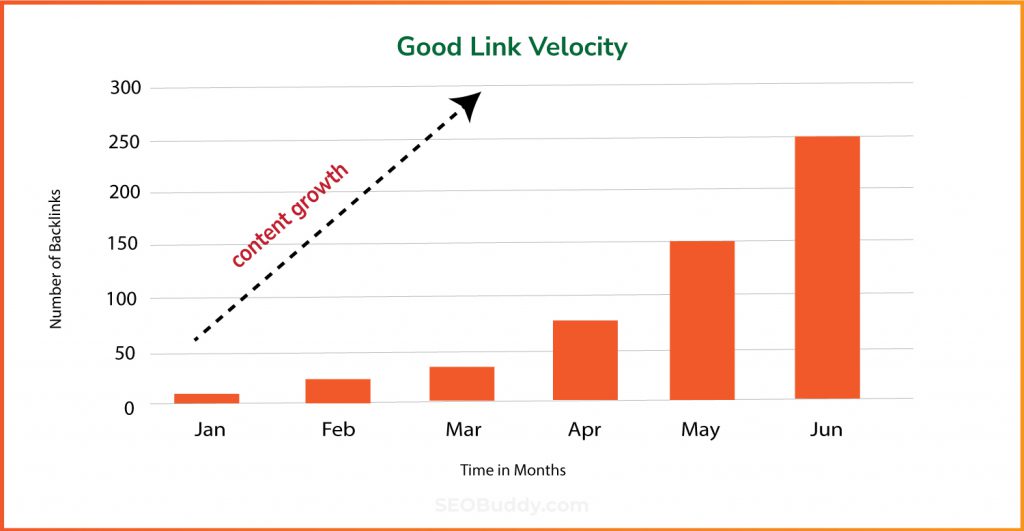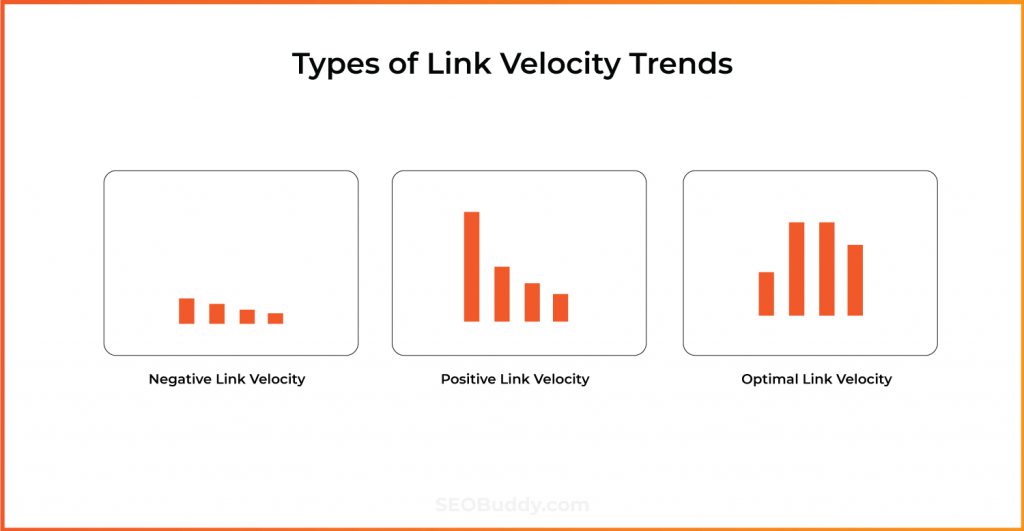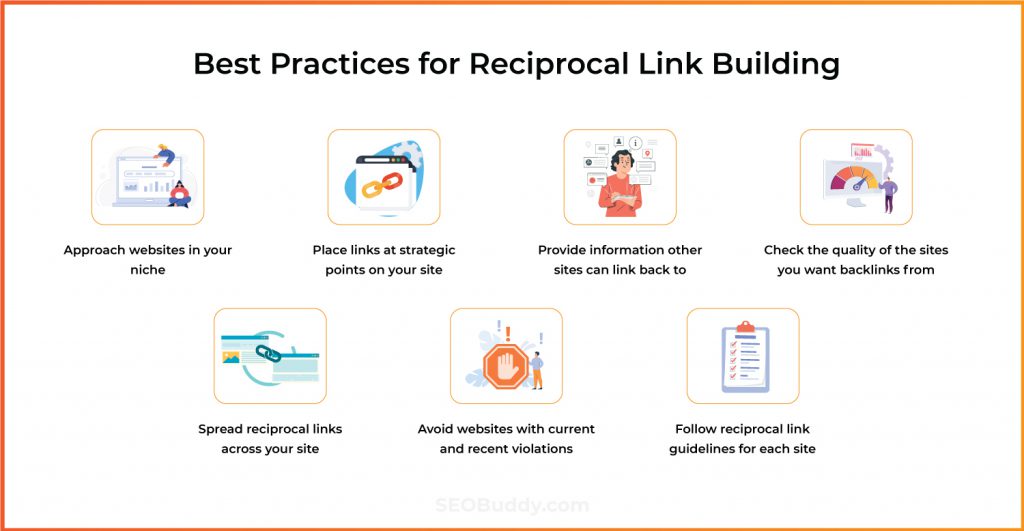Uncover the secret behind skyrocketing website traffic with the mysterious concept of link velocity – are you missing out?

Image courtesy of via DALL-E 3
Table of Contents
Welcome to the world of link velocity! Today, we’re going to explore what link velocity is and why it’s essential, especially for websites. So, fasten your seatbelt, and let’s dive into the exciting world of links and websites.
What is Link Velocity?
Link velocity is all about how quickly links to a website are being added over time. Imagine links as pathways that lead you to different rooms in a house. Link velocity tells us how fast new pathways are being built to connect to a website.
Why Should We Care?
Understanding link velocity is crucial because it can impact a website’s popularity or rank. Just like how more roads make it easier to travel from one place to another, more links can make it easier for people to find and visit a website. So, link velocity can shape how well a website is known and visited on the internet.
The Basics of Links
What are Links?
Links are like gateways on the internet that connect different webpages together. When you click on a link, it takes you from one webpage to another. It’s like a magic door that transports you to a new place on the internet!
Why Links are Important
Links are super important for websites because they help people find information easily. Think of links as roads that guide you from one place to another on the internet. They also connect different parts of the internet, making it easier for you to explore and discover new things online.
How Websites Get Links
In the vast world of the internet, websites are like friends who recommend each other to others. How does this recommendation happen in the digital realm? Through links! Let’s dive into how websites acquire these valuable links that connect them with others.
What are Backlinks?
Backlinks are like referral links in the online world. They are essentially links from one website to another. For instance, imagine your favorite blog linking to a cool website for further reading. That’s a backlink!
Getting More Links
Websites can earn more backlinks through various simple strategies. One common way is by creating and sharing useful information that others find valuable. Another method is to get mentions from other websites or social media platforms. These simple actions can lead to more links pointing back to a website, boosting its visibility and credibility.
Understanding Link Velocity
Link velocity is a concept that helps us understand how quickly new links are being added to a website. Imagine links as roads connecting different websites together. Link velocity focuses on the speed at which new roads (or links) are being built to a website over time.

Image courtesy of seobuddy.com via Google Images
Speed of Links
Speed in the context of link velocity refers to how often new links are being created. Just like a city with many new roads being built quickly allows for faster travel, a website with a high link velocity sees a rapid increase in connections to other websites.
Measuring Link Velocity
There are ways to measure link velocity to track the growth of links to a website. By monitoring how many new links are being added over a certain period, website owners can better understand the rate at which their site is gaining popularity or recognition on the internet.
Why Link Velocity Matters
Link velocity is a crucial factor in determining a website’s success on the internet. But why does it matter so much? Let’s dive into the importance of link velocity and how it can impact a website’s performance.
SEO and Link Velocity
Link velocity plays a significant role in Search Engine Optimization (SEO). When search engines like Google crawl the web, they look at the number and quality of links coming to a site. A high link velocity indicates that the website is gaining popularity, which can positively affect its ranking on search engine results pages.
Good versus Bad Link Velocity
Understanding the difference between good and bad link velocity is essential. Good link velocity involves a consistent and natural growth in the number of links pointing to a website. These links are from reputable sources and relevant to the website’s content. On the other hand, bad link velocity may involve sudden spikes in links or links from low-quality websites, which can raise red flags with search engines and harm a website’s ranking.
Adjusting Link Velocity
When it comes to managing your website’s link velocity, it’s important to strike a balance between gradual growth and avoiding sudden spikes. Let’s explore some tips on adjusting link velocity to ensure your website maintains a healthy link profile.

Image courtesy of seobuddy.com via Google Images
Increasing Link Velocity
If you’re looking to boost your website’s link velocity, focus on creating high-quality content that naturally attracts links. This could include informative articles, engaging visuals, or interactive features that encourage other sites to link back to you. Collaborating with other websites or influencers in your industry can also help amplify your link-building efforts.
Additionally, actively engaging with your audience through social media and other platforms can generate buzz around your content, leading to more organic links. Remember, the key is to foster a natural link-building process that steadily increases your link velocity over time.
Red Flags to Avoid
While it might be tempting to take shortcuts to artificially inflate your link velocity, it’s crucial to steer clear of black hat tactics that can harm your website in the long run. Practices like buying links or participating in link schemes can lead to penalties from search engines and damage your site’s reputation.
Instead, focus on building relationships with other reputable websites and creating valuable, shareable content that naturally attracts backlinks. By prioritizing quality over quantity and staying away from dubious practices, you can maintain a healthy link velocity that benefits your website’s overall performance.
Tools to Measure Link Velocity
When it comes to monitoring and analyzing link velocity for a website, there are various tools and software available that can help simplify the process. These tools assist in tracking the speed at which new links are being added and provide valuable insights into a website’s link-building efforts. Let’s explore some popular tools that can aid in measuring link velocity:
Popular Tools
One widely used tool for measuring link velocity is Ahrefs. Ahrefs allows users to track the number of new backlinks gained over a specific period and analyze the growth trends. This tool provides detailed reports on the quality of the acquired links, helping website owners make informed decisions on their link-building strategies.
Another popular choice is Moz’s Link Explorer. This tool offers metrics such as Domain Authority and Page Authority to evaluate link quality, along with monitoring the rate at which new links are discovered. By utilizing Link Explorer, website owners can identify link-building opportunities and improve their website’s overall link profile.
SEMrush is also a valuable tool for measuring link velocity. With SEMrush, users can monitor the rate of new backlinks, anchor text distribution, and referring domains. This tool provides comprehensive insights into a website’s link-building performance and assists in enhancing its SEO efforts.
Using These Tools
Getting started with these tools is relatively straightforward. After signing up for an account and inputting the website’s URL, users can access the link velocity tracking features within the dashboard. By setting up regular monitoring intervals, website owners can stay informed about the progress of their link-building campaigns and make adjustments as needed.
It’s essential to familiarize yourself with the functionalities of these tools and explore the various metrics they offer to gain a deeper understanding of your website’s link velocity. By leveraging these tools effectively, you can optimize your link-building strategies and enhance your website’s online visibility and authority.
Conclusion
In conclusion, we have learned about the concept of link velocity and why it is essential for websites. Link velocity refers to the speed at which new links are added to a website over time. Understanding link velocity is crucial for improving a website’s search engine ranking and overall performance.

Image courtesy of seobuddy.com via Google Images
Recapping Link Velocity
Link velocity plays a vital role in how websites are perceived by search engines. It is not just about the quantity of links but also the quality and speed at which they are acquired. Websites with a healthy link velocity are more likely to rank higher in search results and attract more visitors.
Frequently Asked Questions (FAQs)
Common Questions
Here are some common questions people often have about link velocity:
Q: What does link velocity mean?
A: Link velocity refers to how quickly new links are being added to a website over a period of time. It is a measure of the speed at which a website is gaining backlinks.
Q: Why is link velocity important?
A: Understanding link velocity is crucial because it can have a significant impact on a website’s popularity and search engine ranking. Websites with a healthy link velocity are more likely to rank higher in search results.
Q: How can I improve my website’s link velocity?
A: You can enhance your website’s link velocity by creating high-quality content that others want to link to, reaching out to other websites for collaborations or partnerships, and promoting your content on social media to attract more backlinks.
Q: What is the difference between good and bad link velocity?
A: Good link velocity signifies a steady and natural increase in backlinks over time, indicating that your website is gaining recognition and authority. On the other hand, bad link velocity may involve sudden spikes in backlinks, which could be seen as suspicious or manipulative by search engines, potentially leading to penalties.
Q: Are there tools available to measure link velocity?
A: Yes, there are various tools and software that can help you track and analyze your website’s link velocity. These tools can provide insights into how your backlink profile is evolving and whether any adjustments are needed to maintain a healthy link velocity.







